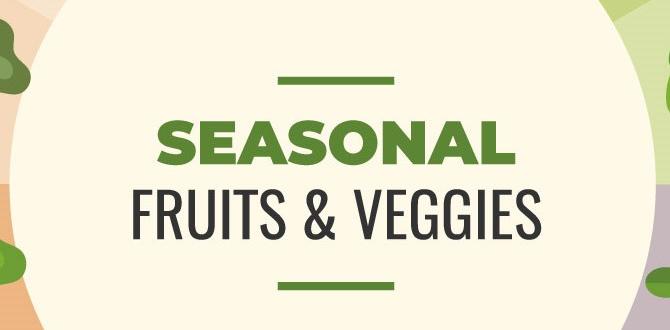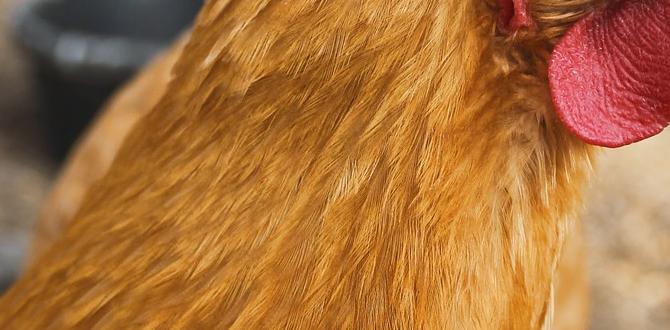Quick Summary
Finding indoor bug sprays safe for humans is crucial for a healthy home. Opt for plant-based, essential oil-based, or homemade solutions. Always check labels for human safety certifications and avoid harsh chemicals to effectively manage pests without risking your family’s well-being.
Hello there, fellow greener-living enthusiasts! Pearl Roach here from EcoPatchy. Ever find yourself battling tiny invaders in your home? A creeping ant here, a buzzing fly there – it can be a real frustration, especially when you’re trying to keep your living space healthy and serene. You want those unwelcome guests gone, but not at the expense of your family’s health, right? The good news is, you absolutely don’t have to choose between a bug-free home and a safe one. We can tackle these indoor critters effectively and kindly. Let’s explore some fantastic, human-safe ways to keep your home pest-free, so you can enjoy your green oasis, worry-free!
Why Choose Human-Safe Indoor Bug Sprays?
It’s a common concern: you see a bug, you reach for the spray, and then you pause. Will this stuff harm my kids? My pets? Me? That pause is a really good sign! Conventional bug sprays often contain harsh chemicals like pyrethroids, organophosphates, and neonicotinoids. These chemicals are designed to kill insects, but they can also pose risks to humans and animals. Even short-term exposure can lead to headaches, dizziness, or skin irritation. Longer-term exposure is linked to more serious health concerns. Choosing indoor bug sprays that are safe for humans means you’re prioritizing the health and well-being of everyone living in your home, creating a truly healthy sanctuary.
Think about it: we spend a lot of time indoors. We eat, sleep, and play within these four walls. Introducing potent chemicals into that environment regularly just doesn’t sit right with a sustainable, eco-conscious lifestyle. It’s much better to opt for solutions that work gently and naturally. This isn’t just about avoiding immediate harm; it’s about fostering a healthier environment for the long haul. By making informed choices about the products we use, we’re building a safer, greener home for ourselves and future generations.
Understanding “Human-Safe” on a Label
When we talk about “human-safe” bug sprays, what are we really looking for? It’s not always a clearly defined term on every label. Generally, these products are formulated to minimize risks to people and pets when used as directed. This often means they:
- Use naturally derived ingredients.
- Avoid synthetic pesticides known for toxicity.
- Are biodegradable and have a lower environmental impact.
- Are often scented with natural essential oils rather than artificial fragrances.
Look for certifications or claims that indicate they are “eco-friendly,” “natural,” “plant-based,” or “safe for use around children and pets.” Always read the active ingredients list. If you’re unsure about an ingredient, a quick search on reputable sites like the Environmental Protection Agency (EPA) can provide valuable insights into its safety profile.
Types of Human-Safe Indoor Bug Sprays
The good news is there’s a growing market for bug control solutions that put human safety first. Here are some of the most popular and effective types:
1. Plant-Based and Essential Oil Sprays
These are fantastic options derived from natural plant compounds. Essential oils like peppermint, lavender, citronella, eucalyptus, and tea tree oil have insect-repelling properties. They work by confusing insects’ scent receptors or even acting as mild toxins to them, while being generally safe for humans in diluted, properly formulated amounts. Many brands offer ready-made sprays, or you can even make your own!
Pros:
- Generally safe for humans and pets when used as directed.
- Pleasant, natural scents.
- Environmentally friendly and biodegradable.
- Can have therapeutic benefits (e.g., calming lavender).
Cons:
- May need more frequent application than synthetic sprays.
- Some essential oils, in concentrated amounts, can irritate sensitive skin. (Always dilute properly!)
- Effectiveness can vary depending on the specific pest and oil used.
2. Diatomaceous Earth (Food Grade)
This isn’t a spray, but it’s a highly effective, natural powder that acts like a physical barrier and dehydrating agent for insects. Food-grade diatomaceous earth is made from fossilized aquatic organisms called diatoms. The microscopic edges of the diatoms are sharp enough to scratch the exoskeleton of insects, causing them to dehydrate and die. It’s completely safe for humans and pets to be around.
Pros:
- Non-toxic to humans and pets.
- Effective against a wide range of crawling insects like ants, roaches, and bedbugs.
- Long-lasting when kept dry.
Cons:
- It’s a powder, so cleanup can be a bit messy.
- Not effective against flying insects.
- Can be irritating to lungs if inhaled in large dusty clouds, so use in well-ventilated areas and avoid creating dust.
3. Soapy Water Sprays
This is a classic DIY solution that’s surprisingly effective for soft-bodied insects like aphids and spider mites. Simple soap can break down the waxy outer layer of an insect’s exoskeleton, causing them to suffocate. It’s incredibly easy to make and very gentle.
Pros:
- Extremely safe for humans and pets.
- Inexpensive and readily available ingredients.
- Environmentally friendly – the soap biodegrades.
Cons:
- Only effective on soft-bodied insects.
- May need multiple applications.
- Can leave residue on plant leaves if not rinsed.
4. Vinegar-Based Sprays
Vinegar, particularly white vinegar, can be effective against certain pests like ants and some crawling insects. The acidity can disrupt their scent trails and also kill them on contact. However, it’s important to dilute it, as concentrated vinegar can damage plants or surfaces.
Pros:
- Natural and readily available.
- Can deter some insects.
Cons:
- Strong smell that wears off.
- Can be irritating to skin and eyes.
- Needs dilution to avoid damage to surfaces or plants.
- Less effective than other methods for many common household pests.
DIY Human-Safe Bug Spray Recipes
For the DIY enthusiasts among us, crafting your own natural bug spray is a rewarding and cost-effective approach. It gives you complete control over the ingredients. Here are a couple of simple recipes:
Recipe 1: All-Purpose Herbal Bug Repellent Spray
This spray is great for deterring a variety of common household pests.
What You’ll Need:
- 1 cup water
- 1 cup witch hazel or rubbing alcohol (acts as a preservative and helps disperse oils)
- 20-30 drops of essential oils (a good blend is 10 drops peppermint, 10 drops lavender, 5 drops tea tree oil)
- A clean spray bottle (glass is best for essential oils)
Instructions:
- Combine water and witch hazel/rubbing alcohol in the spray bottle.
- Add the essential oil drops.
- Close the bottle tightly and shake well to combine.
- Shake well before each use.
- Spray around windows, doors, corners, and any areas where you see pests. Avoid spraying directly onto delicate surfaces without testing first.
Recipe 2: Gentle Soap Spray for Plants
Perfect for tackling those pesky aphids or mites on your indoor plants without harming them or you.
What You’ll Need:
- 1 teaspoon mild liquid soap (like Dr. Bronner’s unscented or pure castile soap)
- 1 quart (approx. 1 liter) of warm water
- A clean spray bottle
Instructions:
- In the spray bottle, mix the warm water and liquid soap.
- Shake gently to combine, trying not to create too many suds.
- Spray directly onto affected plant leaves, ensuring you cover the undersides where pests often hide.
- You can rinse the plant with plain water a few hours later if desired, especially if you are concerned about soap residue.
Important Note for DIY Sprays: Always test your homemade spray on a small, inconspicuous area of any surface or plant before widespread application to ensure it doesn’t cause discoloration or damage. Also, store your homemade sprays in a cool, dark place, and label them clearly.
Choosing a Commercial Human-Safe Bug Spray
If DIY isn’t your style, the market offers many excellent commercial options. When selecting a product, keep these tips in mind:
What to Look For:
- Active Ingredients: Prioritize sprays listing natural ingredients like essential oils (peppermint, rosemary, cedarwood), pyrethrins (derived from chrysanthemum flowers, but check for synergistic agents), or plant oils.
- Certifications: Look for labels that indicate EPA registration (this means it’s been reviewed for safety and efficacy), USDA Organic, or third-party endorsements for safety around children and pets.
- Clear Labeling: The label should clearly state it is “safe for use around… children and pets” or similar phrasing. It should also provide detailed instructions for use and any precautions.
- Specific Pests: Some sprays are broad-spectrum, while others are targeted. Choose one that addresses the specific pests you’re dealing with for better effectiveness.
What to Avoid:
- Undeclared Active Ingredients: Be wary of generic “bug killer” sprays with vague ingredient lists.
- Harsh Chemical Names: Avoid products with long, unpronounceable chemical names that you don’t recognize and that aren’t explained on the label. Common culprits include organophosphates, carbamates, and pyrethroids (though some synthetic pyrethroids are designed for lower toxicity, caution is still advised).
- Strong, Persistent Chemical Odors: A strong chemical smell that lingers for days is often a sign of more potent, less human-friendly ingredients.
Here’s a quick comparison of common types of ingredients you might find:
| Ingredient Type | Pros | Cons | Human Safety Considerations |
|---|---|---|---|
| Plant-Derived Insecticides (Pyrethrins) | Effective against a broad spectrum of insects. Break down relatively quickly in sunlight. | Can still be toxic to fish and beneficial insects. May cause allergic reactions in some people. | Generally considered low toxicity to mammals when properly formulated and applied. Look for products that use synergists (like piperonyl butoxide) to enhance efficacy but also check the overall safety profile. |
| Essential Oils (Peppermint, Tea Tree, Lavender, etc.) | Natural, pleasant scent, often multi-purpose (repellent, some antimicrobial). | Effectiveness can vary. May require frequent reapplication. Some oils can irritate skin if not diluted. | Generally safe for humans and pets when diluted. However, caution is advised with very young children, pregnant individuals, or pets with sensitivities. Always follow product dilution guidelines. |
| Synthetic Insecticides (Organophosphates, Pyrethroids, Neonicotinoids) | Highly effective, long-lasting residual action. | Significant health and environmental risks. Can be toxic to humans, pets, and beneficial insects like bees. Persistent in the environment. | High risk. These should generally be avoided in home environments, especially if human-safe alternatives are available. Consult the EPA’s chemical database for detailed toxicity information if you encounter them. |
| Soaps (Insecticidal Soaps) | Effective on soft-bodied insects. Breaks down easily. | Less effective on hard-bodied insects. May require direct contact. | Generally very safe for humans and pets. Biodegradable. |
Effective Application of Human-Safe Bug Sprays
Even with a human-safe product, how you use it makes a big difference. Here are some application tips:
- Read the Label Carefully: This is the most crucial step! Follow the manufacturer’s instructions precisely regarding application rates, frequency, and areas to spray.
- Targeted Application: Don’t just spray wildly. Focus on common entry points and hiding spots for pests. This includes:
- Cracks and crevices in walls and baseboards.
- Around windows and door frames.
- Behind appliances.
- Under sinks.
- Any areas where you’ve seen pest activity.
- Ventilation is Key: Even natural sprays can have strong scents or release airborne particles. Ensure the area is well-ventilated during and after application. Open windows and doors if possible.
- Protect Sensitive Areas: Avoid spraying directly onto food preparation surfaces, dishes, or pet food/water. If using on indoor plants, ensure the spray is plant-safe and follow any rinsing instructions.
- Persistence Pays Off: Natural sprays often require more frequent application than conventional ones. Be consistent with your treatments, especially during peak pest seasons.
- Combine with Other Methods: Sprays are just one tool. Combining them with good sanitation practices, sealing entry points, and using traps can create a multi-layered defense system.
Beyond Sprays: Holistic Pest Management
While sprays are handy, a truly effective and safe approach to indoor pest management involves several strategies. Think of it as creating an unwelcoming environment for bugs!
1. Prevention is Key
- Seal Entry Points: Inspect your home for tiny gaps around windows, doors, pipes, and vents, and seal them with caulk or weather stripping.
- Cleanliness: Keep your kitchen clean and tidy. Wipe up spills immediately, store food in airtight containers, and empty trash regularly. Don’t leave pet food out overnight.
- Humidity Control: Many pests, like silverfish and some cockroaches, thrive in damp environments. Fix leaky pipes and use dehumidifiers if necessary.
- Declutter: Reduce hiding places by minimizing clutter, especially in kitchens and storage areas.
2. Natural Deterrents
- Essential Oil Diffusers: Use diffusers with pest-repelling oils like peppermint or eucalyptus in areas where pests are a problem.
- Plants: Certain plants, like basil, mint, and rosemary, can help deter some insects when grown indoors.
3. Mechanical Control
- Traps: Use sticky traps for crawling insects or specific traps for fruit flies.
- Vacuuming: Regular vacuuming can remove insects, eggs, and food crumbs, and the vacuum bag should be immediately sealed and discarded outdoors.
When to Call a Professional
Sometimes, despite your best efforts, an infestation can become overwhelming. If you’re dealing with a severe pest problem, or if you’re concerned about identifying a pest or the best course of action, don’t hesitate to contact a pest control professional. Look for companies that offer integrated pest management (IPM) services and prioritize eco-friendly and low-toxicity treatments that are safe for your family.
An Integrated Pest Management (IPM) approach focuses on long-term prevention and control, using a combination of methods and prioritizing the least hazardous solutions. The EPA provides excellent resources on IPM, which can be adapted for home use.
Frequently Asked Questions (FAQs)
Q1: Are essential oils really safe to spray inside my home?
Yes, many essential oils are safe and effective when used correctly in diluted forms. Always use reputable, 100% pure essential oils and follow recommended dilution ratios for sprays. Some oils, like tea tree or eucalyptus, should be used with caution around pets, especially cats. Always ensure good ventilation.
Q2: Will natural bug sprays kill bugs instantly?
Natural sprays often work a bit differently than strong chemical ones. They might repel bugs, or kill them more slowly through dehydration or suffocation. You might need repeated applications or direct contact for them to be most effective.
Q3: Can I spray these safe bug sprays on my furniture or curtains?
It’s best to test any spray on an inconspicuous area first. Some natural ingredients, like vinegar or certain essential oils, could potentially stain or damage delicate fabrics or





